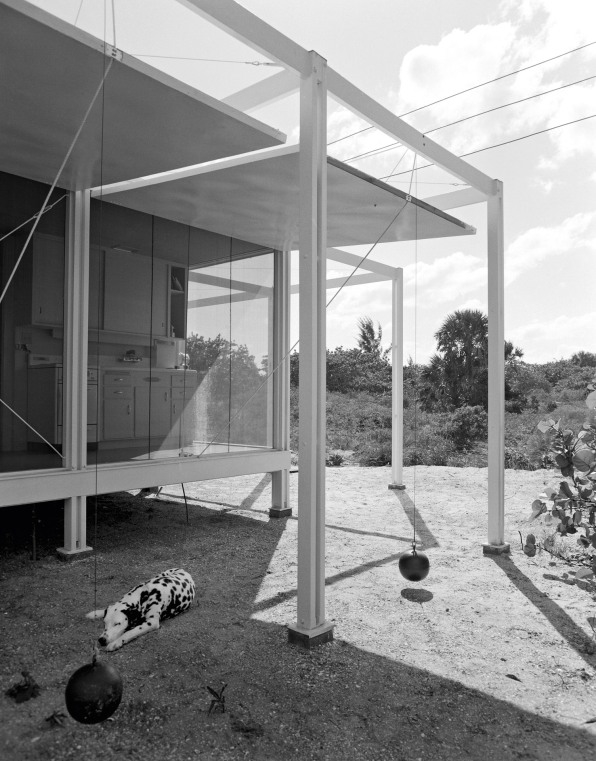Buy this iconic midcentury modern house before it’s underwater
Architect Paul Rudolph built his iconic, glass-walled Walker Guest House in 1952—long before the perils of climate change were known. Commissioned by Dr. Walter Willard Walker, the steel-framed cottage sits on Sanibel Island, a part of southern Florida that faces the Gulf of Mexico. Today, the 1.6 acre beachfront lot the house sits on is tricky territory; by 2040, the sea that surrounds Sanibel is expected to rise anywhere from 0.3 feet to more than a foot, which will render the low-lying coast an underwater landmass.

That could explain why Sotheby’s, which is hosting a new auction for the home on December 12, is advertising the beach cottage as “completely moveable.” The guesthouse, a 576-square-foot structure sitting on a 24-by-24-foot platform, is a cubic marvel. The lightweight frame, which is raised on steel stilts, allows for sweeping views of the scenic Sarasota, Florida, landscape that surrounds it. The house became known for the adjustable wood shutters Rudolph designed for the home—they are controlled by a series of heavy red “cannonballs” that can work as pulleys to draw the blinds into place.
“This remarkable structure is entirely unique—from its signature red cannonball pulley system, to the delicate balance of openness and privacy. Upon visiting the house for the first time, I was immediately struck by the ethereal sense of light and airiness that created a seamless connection with the outside landscape, as well as the overwhelming sense of efficiency,” Jodi Pollack, Sotheby’s co-worldwide head of 20th-century design, said in a statement. The house originally went up for sale in January of this year for $6,795,000, including the main residence on the property. But the guesthouse auction, which includes the original furnishings, specifically designed and curated for the house by Rudolph, is expected to fetch between $700,000 and $1 million alone.
The exterior shutter system is based on traditional Caribbean architecture. Each shutter is connected to a 77-pound, red cannonball weight; when raised, the balls close the shutters, and when lowered, they create canopies. “It was as if the house was a ‘machine for living,’ entirely adaptable for all occasions,” Pollack continued. “Though it was built nearly 70 years ago, the Walker Guest House had continued to impart this sensory experience upon anyone who visits it, which is a testament to both Rudolph’s legacy and that of the Walker family, who have remained the house’s loyal stewards.”
While Sotheby’s encourages potential buyers to purchase the guesthouse and relocate it to a new destination, as it is designed for adaptability (one of Rudolph’s major design principles), the land itself and primary home are not for sale. “If the Walker Guest House could not be preserved in situ, the next best thing, [the Walker family] decided, would be to sell it to someone who would give it a new life somewhere else. It will almost surely leave Sanibel Island, but the trade-off will be knowing that one of the most important designs by one of the 20th century’s most important architects—one that, by its nature, is not specific to its site, and could be set down almost anywhere—will be preserved,” Paul Goldberger, Pulitzer Prize-winning architectural critic said in a statement.
The modular mini-home, functional and firmly planted in the white hot sand, includes a living room, dining room, kitchen, one bedroom, and one bathroom. Cannonballs included.
![]()
![]()
![]()
![]()
(34)

